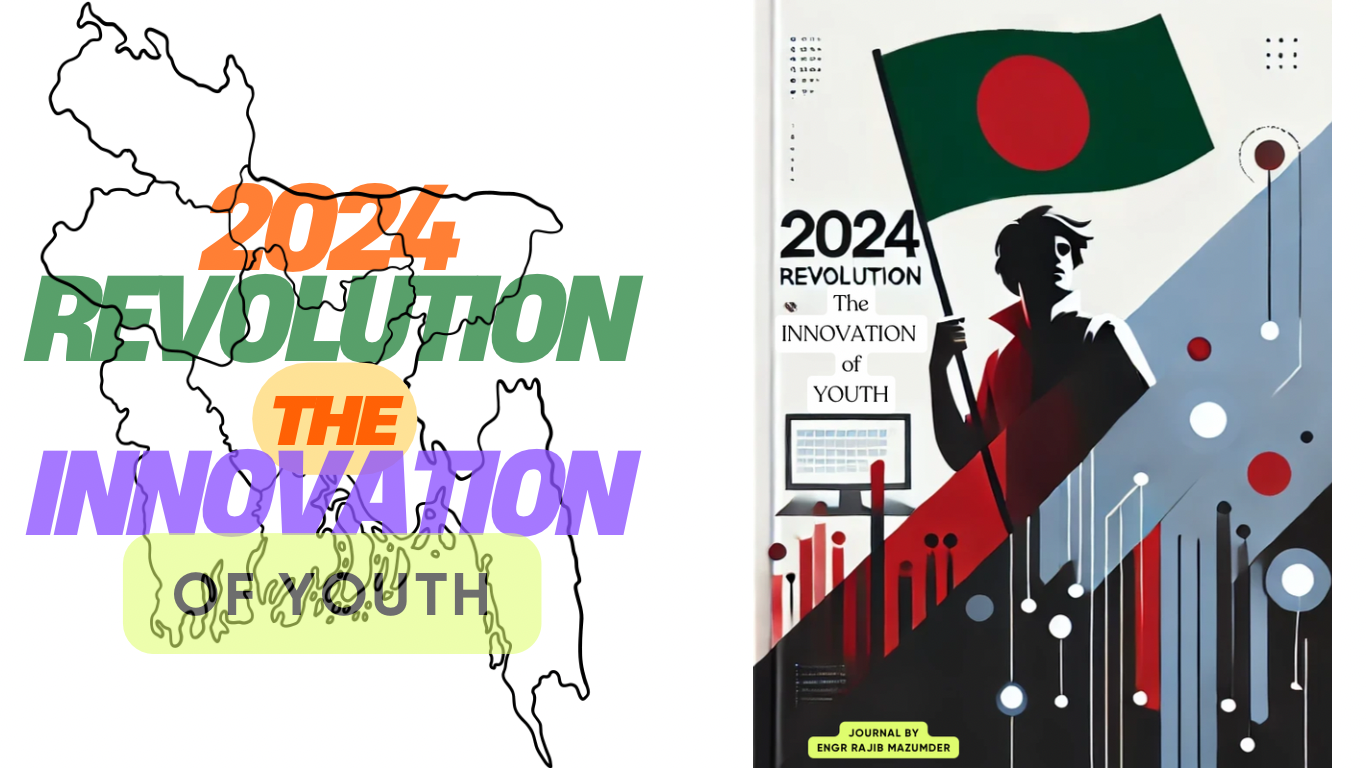The 2024 Revolution of Bangladesh: Youth Innovation and the Rise of Changemakers
 Rajib Mazumder
Rajib Mazumder
The 2024 revolution in Bangladesh stands as a landmark event driven by youth innovation, technological mobilization, and a deep commitment to democratic reforms. Emerging from student-led protests against the reinstated quota system in government jobs, this movement quickly expanded into a nationwide demand for systemic change. This paper examines the role of youth as changemakers, their innovative approaches to political mobilization, and the long-term impact on Bangladesh’s governance and democratic structures. It explores how technology, inclusive leadership, and institutional engagement have shaped a new political landscape, ultimately leading to the formation of a new political party and governmental reforms.
1. Introduction
Bangladesh has witnessed several political upheavals in its history, but the 2024 revolution was unique due to the active role of young changemakers. Unlike traditional movements, this revolution was shaped by digital activism, grassroots mobilization, and strategic policymaking by the youth. This paper explores the genesis, strategies, and outcomes of the 2024 youth-led revolution, emphasizing its implications for democracy and governance in Bangladesh.
2. Background and Genesis of the Movement
The revolution originated from student-led protests against the government’s decision to reinstate a controversial quota system in government jobs. The system was perceived as an unfair advantage for certain groups while marginalizing meritorious candidates. Youth activists, particularly university students, initiated peaceful protests that rapidly gained nationwide traction.
Key Triggers of the Movement:
1. Discriminatory Quota System – Students viewed the reinstated quota policy as unjust, limiting fair employment opportunities.
2. Political Corruption – Widespread dissatisfaction with government policies, corruption, and lack of transparency fueled the unrest.
3. Demand for Democratic Reforms – Calls for fair elections, accountability, and constitutional changes became central themes of the movement.
3. Youth Innovation as a Driving Force
The success of the 2024 revolution was largely attributed to youth-led innovative strategies in political mobilization.
3.1 Digital Activism and Social Media Mobilization
• Social media platforms (Facebook, X, YouTube) played a crucial role in real-time communication, allowing organizers to mobilize mass participation.
• Livestreaming protests and data-driven campaigns increased transparency and countered government misinformation.
3.2 Strategic Grassroots Organizing
• Student leaders formed decentralized networks to prevent leadership crackdowns.
• Localized protest hubs ensured sustainability despite governmental suppression.
3.3 Creative Protest Methods
• Artistic activism, including graffiti, protest music, and street theater, helped engage the broader public.
• Digital petitions and open letters gained international support.
4. Youth as Changemakers: Transition from Protest to Governance
One of the most remarkable aspects of the revolution was the shift from street activism to structured political engagement.
4.1 Formation of the National Citizen Party
In a historic move, former student leaders established the National Citizen Party (Jatiya Nagarik Party), aiming to institutionalize youth-driven reforms within the political system.
4.2 Institutional Engagement
• Several youth leaders were appointed as advisors in the interim government.
• Focused efforts on drafting a new democratic constitution.
4.3 Policy Impact
• Introduction of merit-based employment policies.
• Electoral reforms to ensure fair democratic processes.
5. Cultural and Global Impact
5.1 Cultural Renaissance
• A surge in creative expressions—poetry, documentaries, and literature—reflected the aspirations of the youth.
• Nationalistic and reformist sentiments flourished in contemporary arts.
5.2 International Recognition
• The revolution was hailed as the world’s first successful “Gen Z Revolution.”
• Global media and human rights organizations praised the movement for its peaceful yet effective approach.
6. Conclusion and Future Implications
The 2024 revolution of Bangladesh marked a significant shift in the nation’s political landscape, demonstrating that youth innovation and strategic activism could drive real change. The formation of a youth-led political party, institutional reforms, and cultural shifts underscore the lasting impact of this movement. As Bangladesh transitions into a new democratic era, the role of young changemakers will continue to shape governance and policy decisions.
Future Research Directions
• Long-term impact of the National Citizen Party on Bangladesh’s political system.
• Comparative studies with youth-led movements in other countries.
• Analysis of digital activism’s effectiveness in sustained political change.
References
1. Reuters. (2025). Bangladeshi students launch political party after ousting PM Hasina.Retrieved from Reuters
2. AP News. (2025). Bangladeshi students who led uprising that ousted ex-premier Sheikh Hasina form new political party. Retrieved from AP News
3. Financial Times. (2025). Bang
Subscribe to my newsletter
Read articles from Rajib Mazumder directly inside your inbox. Subscribe to the newsletter, and don't miss out.
Written by

Rajib Mazumder
Rajib Mazumder
Engr. Rajib Mazumder is a distinguished ICT expert and visionary storyteller from Bangladesh, boasting over 18 years of experience in technology and innovation. As the Research and Innovation Specialist and Team Lead at the Innovation Design and Entrepreneurship Academy (iDEA), BCC, ICT Division, he spearheads transformative solutions for a tech-driven Future Bangladesh. His pioneering AI research, including projects like "Smart Defence" and "AI Hub," advances national technological ambitions.